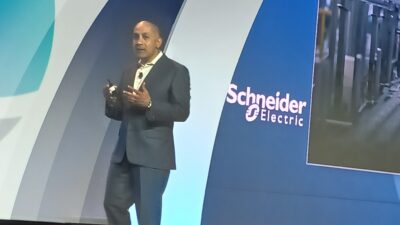Baldwin Filters, a Kearny, Neb.-based manufacturer of air, oil, fuel, and hydraulic filters primarily for industrial vehicles, is ramping up an OEE (Overall Equipment Effectiveness) program. It also is taking steps to ensure that the computer systems that support its plant operations are as finely tuned as its production equipment.
Baldwin Filters , a Kearny, Neb.-based manufacturer of air, oil, fuel, and hydraulic filters primarily for industrial vehicles, is ramping up an OEE (Overall Equipment Effectiveness) program. It also is taking steps to ensure that“Computing systems are very instrumental in the manufacturing process,” says Eric Carel, network systems supervisor for Baldwin Filters. “We support a large amount of equipment on the shop floor directly in our network environment. This includes a lot of automated production control equipment, inspection equipment, and supporting systems such as wireless RF systemsAll of Baldwin’s 52 server computers and approximately 400 workstations run on the Microsoft Windows Server 2003 operating system, as well as Microsoft’s SQL Server 2005 database.
Because every second of production counts, especially with such a high number of computer operations, file fragmentation can be a serious barrier to increasing efficiency. File fragmentation—the splitting of files into tens, hundreds, or even thousands of fragments—is a fact of life on today’s computer hard drives, developed to fully utilize disk space. The downside is that accessing a file in multiple fragments adds considerable time to both employee
Management for Baldwin Filters long ago realized that fragmentation needs to be countered. And like many companies, Baldwin originally installed a system that would allow for scheduling defragmentation sessions when there were the least number of users on their systems. This took care of the fragmentation performance problem—but at somewhat of a price.
“Scheduled defragmentation was a headache to manage; on-demand defragmentation interrupted users until completed; and those left with fragmented hard drives had to deal with subpar system performance,” Carel says.
This year, however, Carel and his team discovered a new solution that is able to defragment without scheduling, in real time, invisibly, in the background, with no affect on computer users. It was a great find for Carel.“Given the sheer number of computers and operations that must be managed with limited staff, having an automated low-maintenance environment is essential,” he says.
One feature of the new solution that Carel especially likes is called I-FAAST (Intelligent File Access Acceleration Sequencing Technology). This feature boosts access to frequently used files, and Carel and his staff employ it to increase the performance of disk-to-disk back-up operations.
Lean and efficient manufacturing methods are vital in today’s cutthroat market. When implementing them, however, don’t overlook the efficiency of your computers and the primary barrier to optimum computer system efficiency: file fragmentation.
Bruce Boyers is a freelance writer based in Glendale, Calif. He wrote this article on behalf of Diskeeper Corporation



